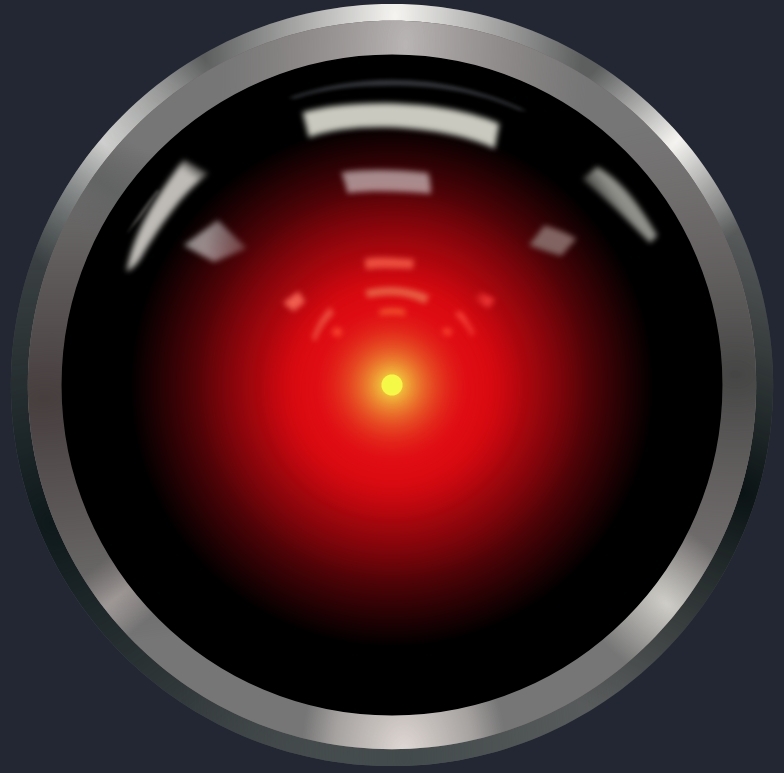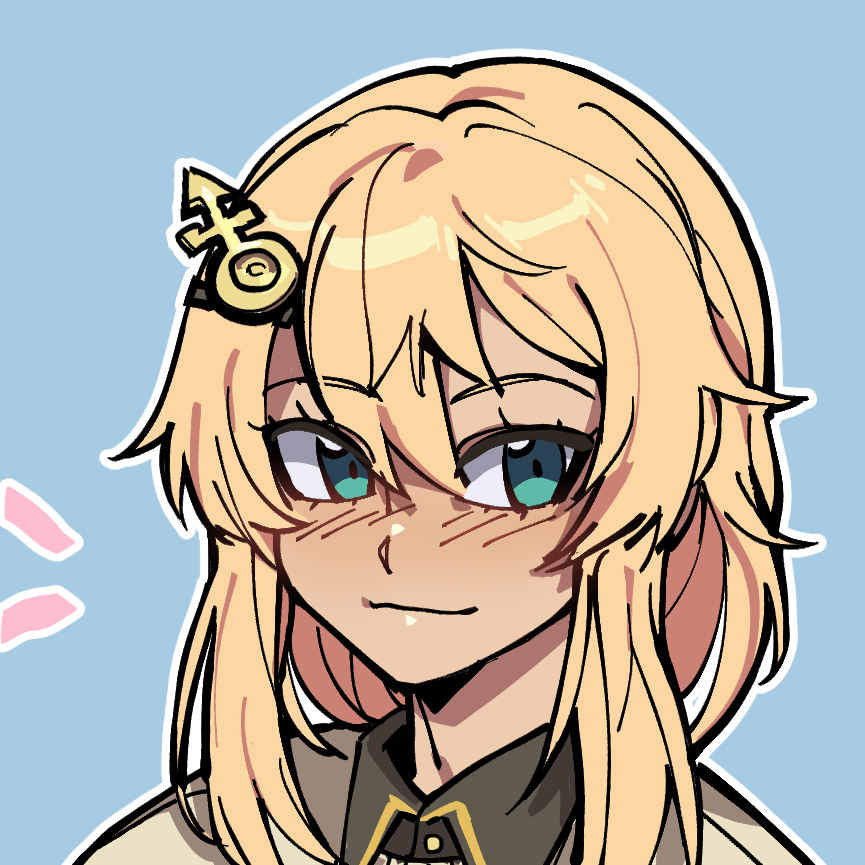I’m probably jumping to conclusions, but Nvidia?
Yes it is
I explicitly bought an AMD CPU and GPU and did not have any trouble with both of them ever since
If I knew about all this pain many years ago when I bought my NVIDIA card, I would have done the same…
God, nearly every time I Google a problem I have, it’s NVIDIA. The rest is that I want to share my steam library from my windows-installation on a NTFS drive
Nvidia Arch user here, are you just forgetting to rebuild your kernel modules after a kernel or nvidia driver update?
You can just add a pacman hook that triggers
mkinitcpio -Pafter the linux or nvidia packages are updated. I’ve never had a no-GUI situation from a stray update… maybe one or two that were my own doing when trying to set up UKI’s though.Why not just use DKMS?
I think dkms is for inserting kernel modules, but I’m dumb and what’s the difference between both these approaches?
The Dynamic Kernel Module System automatically builds your modules for your updated kernel.
The Arch Linux team releases Nvidia updates at the same time as kernel upgrades which should trigger a initramfs rebuild via mkinitcpio anyway
unless you do a partial upgrade anyway (never do that)
I just followed the note that’s mentioned on the top of your link and installed the Nvidia driver as dkms package. I originally did that because of trouble with a new driver version and temporary downgrading is much smoother with dkms.
Also never had issues with the DE starting properly after upgrade since then.
I’m usually using
nvidia-betadrivers from AUR because they’re newer, so I just added the hook as an insurance policy.The DKMS drivers are probably the safer option because they’ll handle rebuilding the kernel modules. Even though (like EddyBot said) the kernel and nvidia packages are supposed to get updated together, sometimes you can spam
pacman -Syuat the wrong time and only one package is updated and things go wonky…
yep, just as easy as windows
(I actually work with redhat and cent … bring it on neets)
Me looking from openSUSE Tumbleweed:

Me feeling slightly more smug on opensuse slow roll 😊
Just learn how to do everything in the TTY. GUIs are bloat
I already did, but wobbly windows is my love!
Somebody needs to make a wobbly terminal
Magnet on the side of my CRT 😍😍
Both wobbly and colorful
I like this idea, great and cost effective tought!
Just get a CRT with speakers instead, and then that’s basically the same thing, with the bonus that it wiggles and your eardrums split open when you play anything at a volume higher than 10
If that comes out I’ll buy a wobbly monitor, with a wobbly keyboard to make the set complete
You don’t have to wait, just use LSD…
I love Linux Subsystem for Drugs!
Zellij and Twin pull requests in three… two…
Don’t bother with the tty. If experienced chess players can play entire games in their heads, why can’t you just do the same to use a computer? Just type away and use your superior power usering skills to visualize the output in your head.
Thanks, now I’m running Quake on my brain.
But can it run Crysis with ray tracing?
When the rolling release is a rolling release: D:
When bleeding edge bleeds: ¶:
Fedora: uhm excuse me wtf?
I want it rolling in updates. Not rolling into the river and drowning itself.
What did you edited ? Arch user here, never had this kind of issue. Also if you managed to install Arch, you should be able to fix it(maybe you switched from terminals, try ctrl+alt+1-9)
You were just lucky. For some of us ut was just about having the wrong hardware at the wrong time.
Not complaining, I knew the risks going in and still love my distro, but arch updates totally can brick a PC with no PEBCAK involved. It does happen. :3
Arch dosn’t break by itself, i’ve used bunch of Arch installations and every time it broke it was because of bad manipulation, not pacman -syu
Arch DEFINITELY breaks itself. See the whole “arch update broke grub” dilemma
Have you tried it or are you just spreading misinformation ?
Arch breaking grub has happened to me twice. Second time I couldn’t even recover the install.
You learn a lot of good practices by using arch, eg a separate home partitjon, git repositories for your config files, maintaining a clean package tree etc. Installing Arch is also really useful for noobs like me to learn some Linux basics.
I use Fedora, btw.
maintaining a clean package tree
What do you mean by that, specifically? I looked that up online and maybe I’m a bit dumb, but I didn’t find anything that made much sense
I don’t know if that’s a widely recognized term.
Pacman used to be really bad at removing unneeded dependencies. I think pretty much every package manager has this facility now. For instant apt auto remove.
Suppose you installed gnome to try it out, gnome installs like 1000000 packages. The thing about some of those dependencies is that they’re really useful. It’s not uncommon for another package you have installed to use it as an optional dependency. In that case it doesn’t get flagged for autoremoval when you uninstall gnome.
When you apply this logic a couple layers deep they start to compound.
Also libraries and random python scripts tend to just exist forever in your system long after you used it lol.
I started developing the habit of checking what dependencies are being installed and to uninstall immediately when I realize I don’t need it.
This logic applies to language specific managers like cargo or pip too.
They all have really good tooling to figure out leaves, orphaned nodes etc. I just didn’t start using those until I got into the arch hype.
I was among one of the grub fiasco victims. Thank goodness they rolled it back pretty fast and I knew how to chroot.
I have not experienced it but half of the arch users on reddit seem to have experienced it. Also it’s not a continuous problem but rather a problem with a certain arch and grub version. However the fact it happened once (to many people) means it can happen a second time
A grub breaking thingy happened to me too.
I was saved by having multiboot, with every OS having their own GRUB version installed. (just selected one using the motherboard’s interface)The problem occurred when, after
pacman -Syu, I read notes in the output, one of which hinted I would want to update GRUB and went - “Sure, I’ll try the new GRUB update” and ran GRUB update.When it didn’t startup after a restart, I just used the debian’s GRUB to login to the OS in question, downgraded GRUB, reinstalled GRUB and then ran
pacman -Syuagain.I feel like mine wasn’t the problem instance that goes on around the web, mostly because:
- None of the mentioned fixes worked in my case.
- I feel like people won’t go out of their way to update GRUB most of the time.
How did you installed it ? Official arch repo or self compiled ? And what nvidia drivers are you using ? Nouveau or proprietary one ?
@Titou proprietary drivers, dkms version.
Official repos.Both my friend and I experienced this, a few minutes later pahole was reverted to previous version on the repos and the update was delayed until fixes were made.
I migrated from nvidia to amd last summer and no issues since then ( a few crashes in Minecraft, its the only game capable of crashing the GPU, dont know why or how ).
Conflict issues is not arch-exclusive(happenned to me on debian sid months ago) but glad to heard you switched to amd
That’s anecdotal evidence but good for you!
Sounds like a skill issue. Some people just don’t know how to use Arch.
Signed,
Someone who has spent more days reinstalling Arch than using it.
Why are you using arch Linux if not to debug your system though?
There’s a difference between “can” and “want.” For example, OP might have been planning to watch his home vids with your mom, but couldn’t due to a rolling update.
That’s the problem with obnoxious updates, actually.
Can I talk to you about our Lord and Savior Tumbleweed?
Last time I tried it, the more custom stuff I put on it(custom color scheme, window decorations etc.) the more it fell apart
How did you manage to break it with themes lol
Admittedly, I haven’t done too much of that, but it might still be more stable than needing to reinstall your OS every 2-3 weeks?
I’ve done exactly too much of this stuff, and now I can’t stop. Dont let r/unixporn consume you!
Funny because just like those door to door bible sales, Tumbleweed promises magic and salvation, but completely crumbles under any stress or expansion
Not my experience at all. It’s the one distro that stopped my distro hopping.
Besides, something goes fucky or (more likely in my case) I fuck something up, I can just roll back the changes with a single command and reboot. It’s awesome. I’ve also used to just test things out, removed all KDE stuff, installed GNOME, tested it out for a while and then did a snapper rollback. The system was just like I hadn’t changed anything. It’s really cool, more distros need this feature.
Wild, every time I’ve tried using it on both metal and as a VM it has self destructed rather quickly. The last few times, just doing an update after the initial install broke the system for various reasons… but everyone has different hardware and software mixes I suppose
Just got a new laptop and put an arch flavor on it, keep thinking of going back to Tumbleweed. I’ve kept on Arch derivatives cause of the AUR, but I haven’t actually touched the AUR in a while, and a couple of the things I used the AUR for are now being published as flatpaks by the creators because of the Steam Deck.
Give it a shot, you can always go back
well arch moment, you could use snapshots or ostree to rollback if something like that happen
I usually just do a full reinstall, it’s faster, requires less storage, and it’s more futureproof. I have my home folder at a different partition, so the files aren’t a problem. Archinstall made this a lot easier, and i love it.
After being with my current distro and install for several years I’ve accumulated so many small changes and tweaks into the system that it’d take ages for me to get back to where I am with a fresh install. Snapper snapshots for life
yeah, separated home folder is also a solution, now, faster than “rpm-ostree reset” or pulling the old snapshot? idk
🦎 Tumbly bumbles
It’s the second time sddm broke for me in the space of a week
I just disabled its service for now and am launching plasma manually.
Speaking of – Plasma 6 hooray!
As long as I can get into the terminal I can fix the GUI. What really sucks is when it something that runs in the DM init sequence was using Python but a Python upgrade changed the import path and no it keeps restarting and I need to boot from a USB to disable that service so I can log into something and properly fix it.
Pass something stupid via your bootloader so it aborts boot and dumps you in an initrd busybox shell. No usb required.
This was my poor man’s boot environments when I was using zfs on root. I had a pacman hook to snapshot before package transactions, then if it became unbootable I’d interrupt the following boot attempt, edit my grub command line with something wrong so I’d get dumped in the busybox shell, import my zfs pool and roll back before finally rebooting again.
That’s nice. I’ve later googled it and found out that I could have added
3to the end of the grub command to make it boot in runlevel 3 which does not trigger the GUI, but I guess your way could also bypass boot issues that prevent even non-gui boot.I also see that there is runlevel 1, which is kind of an emergency mode, so maybe that would be the best thing to use?
Yeah for my case it was easier in the initrd otherwise I’d be trying to roll back the active / partition.
Re run levels, they were a sysvinit thing so I wasn’t sure sure about systemd, this suggests that would work though https://fedoraproject.org/wiki/SysVinit_to_Systemd_Cheatsheet
And if you have to bail out even earlier, run level 1 will give you the
rescue.target
damn thats oddly specific XD
Arch neats on suicide watch
Time to switch to NixOS!
deleted by creator

















